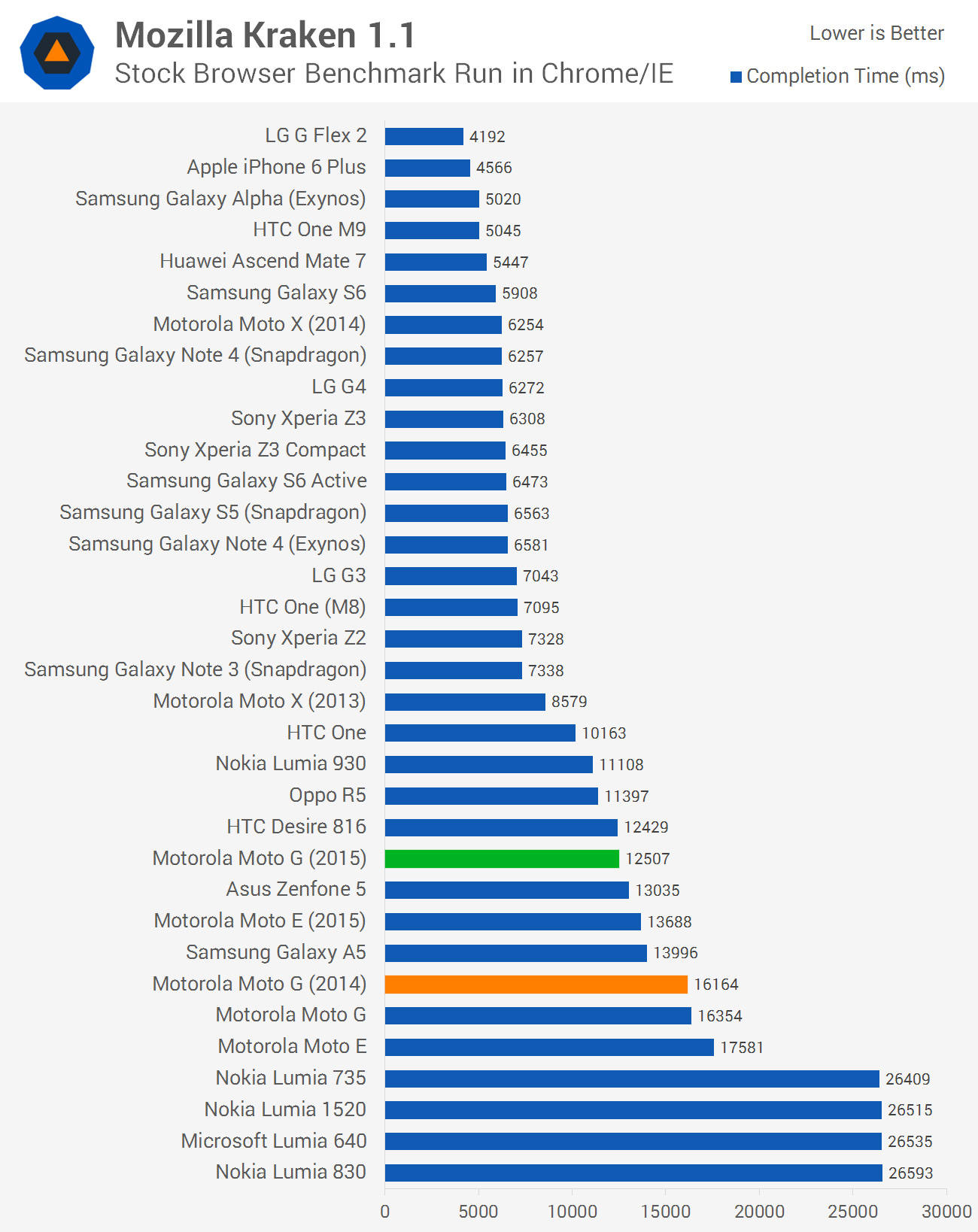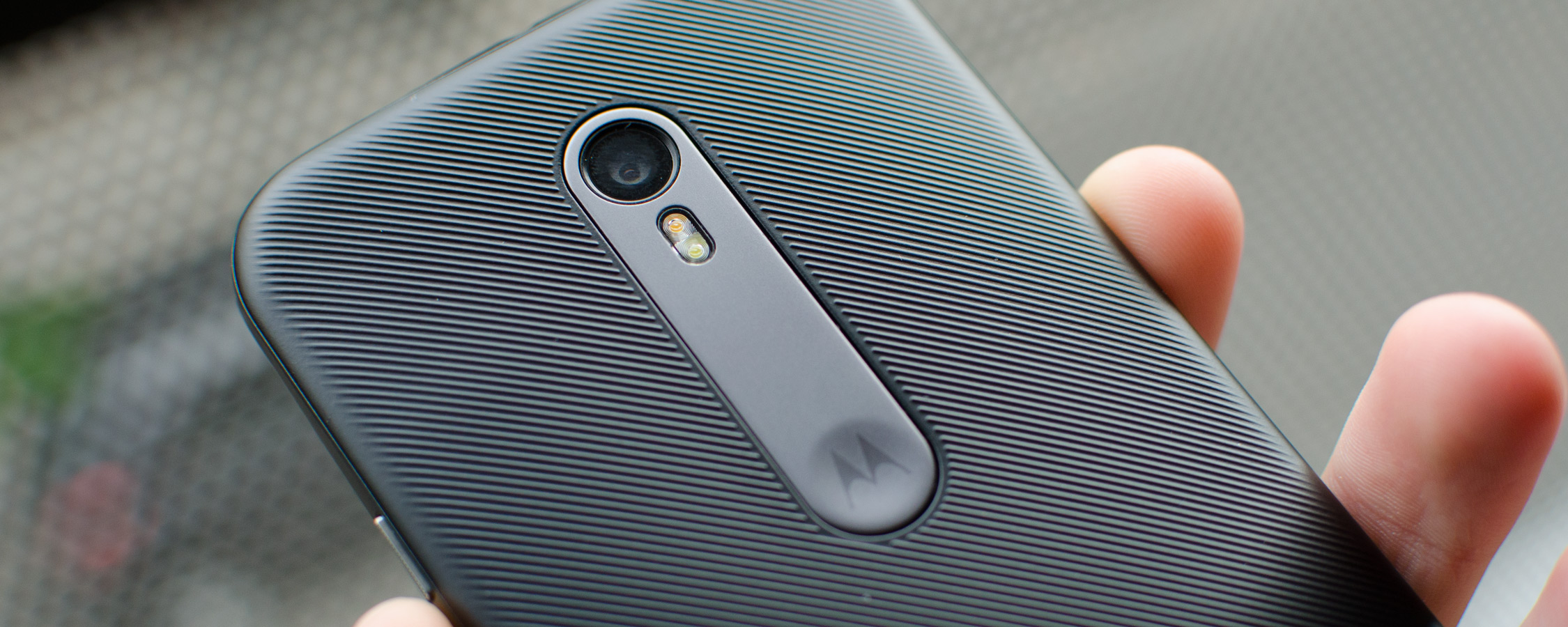Hardware Overview & CPU Performance
After two years with the Snapdragon 400 inside, Motorola has updated the Moto G's SoC to a Qualcomm Snapdragon 410 in the 2015 model. We first got a good look at the Snapdragon 410 in the Samsung Galaxy A5, and the MSM8916 used in the third-gen Moto G is largely the same. This means we're expecting to see decent CPU performance gains on the 2014 Moto G with virtually no gains on the GPU side.
The MSM8916 in the Moto G 2015 features a quad-core ARM Cortex-A53 CPU clocked at up to 1.4 GHz, which is slightly higher than the 1.2 GHz CPU clock we've seen in other Snapdragon 410 devices (the Galaxy A5 and the 2015 Moto E). This clock speed increase should result in around 15% better performance in CPU limited workloads relative to other Snapdragon 410 handsets.
Interestingly, despite this 200 MHz jump in max CPU frequency, the Moto G's Snapdragon 410 still carries the same model number as other 1.2 GHz iterations. This is somewhat confusing for people wanting to compare Snapdragon 410 devices, but luckily it's the only major difference.
As for other aspects of the hardware, the 2015 Moto G's Snapdragon 410 features an Adreno 306 GPU clocked at 400 MHz, as well as a single-channel LPDDR3 memory controller clocked at 533 MHz, providing 4.2 GB/s of bandwidth. The Moto G supports 1080p H.264 encode/decode as well as 720p HEVC decode.
For wireless connectivity, the Moto G 2015 supports single channel Wi-Fi 802.11b/g/n, Bluetooth 4.0 LE, GPS+GLONASS, and Category 4 LTE. The inclusion of LTE in the 2015 Moto G is a big upgrade on last year's model, which only featured HSPA+ support in the base model. With this new Moto G, all models support LTE, even the cheapest $179 variant.
There are several versions of the Moto G 2015 in the wild, so you should check with your carrier before making a purchase to ensure the LTE bands supported in the handset match up with those used by your carrier.
Storage-wise, there are two main Moto G models available: an 8 GB model with 1 GB of RAM, which costs $179.99, and a 16 GB model with 2 GB of RAM, which costs an extra $40 ($219.99). I was sent a 16 GB model to review with 2 GB of RAM, and I'd generally suggest to go with this model if you can afford the extra $40, as 8 GB of internal storage can be a bit restrictive for installing applications. The 16 GB model comes with just under 12 GB of usable space out of the box, versus around 5 GB for the cheaper model.
Of course you can add in up to an extra 32 GB of storage via the phone's microSD card slot, but not every app supports Android's move-to-SD-card feature, and typically transfer rates from external storage are slower than from in-built NAND.







Across out suite of benchmarks, the Moto G 2015 was 24% faster than the Moto G 2014 in CPU-bound workloads, and 29% faster in workloads that stressed all areas of the device's hardware. These gains are due to a combination of higher instructions per clock (IPC) and higher clock speeds.
The Moto G 2015 was also 7% faster than the HTC Desire 816 in CPU workloads, a device with a 1.6 GHz Snapdragon 400 (versus the 1.2 GHz Snapdragon 400 in the Moto G). Compared to the Moto E 2015, we're seeing CPU performance increases of 15%, exactly in line with the rise in CPU clock speeds.

